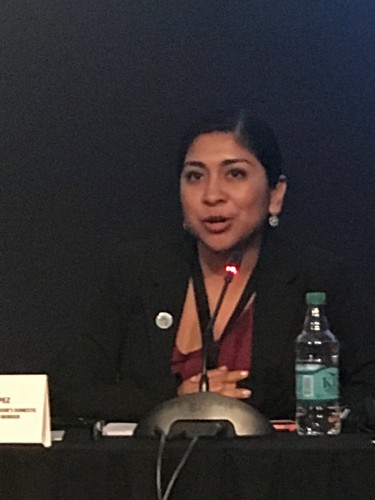The World Gathers to Fight Child Labor at the Fourth “Global Conference on the Sustained Eradication of Child Labour”
The world is making significant progress in removing the scourge of child labor—there are 94 million fewer child laborers today than there were 16 years ago. I believe one of the reasons for this progress is the coming together of governments, worker groups, and human rights and child rights groups every four years for an international conference for focused strategy sessions on reducing child labor. I realize that there might be some skepticism that a conference could make much difference, but hear me out.
This year’s conference, organized by the government of Argentina and the International Labour Organization, took place in Buenos Aires, Argentina November 14-16 and brought together over 150 countries and about 3,000 individuals who are in some way involved in the fight against child labor. I was there representing the Child Labor Coalition (CLC), which is co-chaired by the National Consumers League and the American Federation of Teachers, and has been fighting to reduce child labor for nearly three decades.

The CLC’s Norma Flores Lopez
The conference featured many great panels. Several were about trying to confront work in agriculture—the most ubiquitous form of child labor (comprising 70 percent of the problem. Others confronted hazardous work, which involves 73 million children—almost half of the child labor population which is currently 152 million.
The CLC’s Norma Flores Lopez, the chair of our Domestic Issues Committee, spoke movingly about her own experiences working in US fields as a child farmworker. Norma noted her belief that racial discrimination plays a part in persistence of child labor. Most children impacted by child labor are children of color, she noted. Authorities, she suggested, feel less pressure to remedy the exploitation of racial and ethnic minorities. Conference participants seemed stunned to learn that the US has a child labor problem—our lax child labor laws allow children to work in agriculture beginning at age 12 and kids are allowed to work unlimited hours as long as they do not miss school. Some children work 80-90 hour weeks, performing back-breaking labor in stifling heat.
Jo Becker, a child rights specialist for Human Rights Watch and an active member of the CLC, spoke about hazardous work and the dangers children are routinely subjected to in the fields and other dangerous locations. Becker has been a leader in campaigns to remove children from combat, from mines, and from tobacco farms in recent years. She noted that Brazil lists child tobacco work as hazardous but the U.S. does not—something that the US government needs to fix. In 2014, Human Rights Watch published a ground-breaking report, “Tobacco’s Hidden Children: Hazardous Child Labor in US Tobacco Farming,” based on interviews with children working on American tobacco farms found that more than half had suffered symptoms that correlated with nicotine poisoning.
Both Norma Flores Lopez and Sue Longley of the International Union of Food, Agricultural, Hotel, Restaurant, Catering Tobacco and Allied Workers’ Association both spoke about sexual harassment that girls and young women experience in agriculture.


